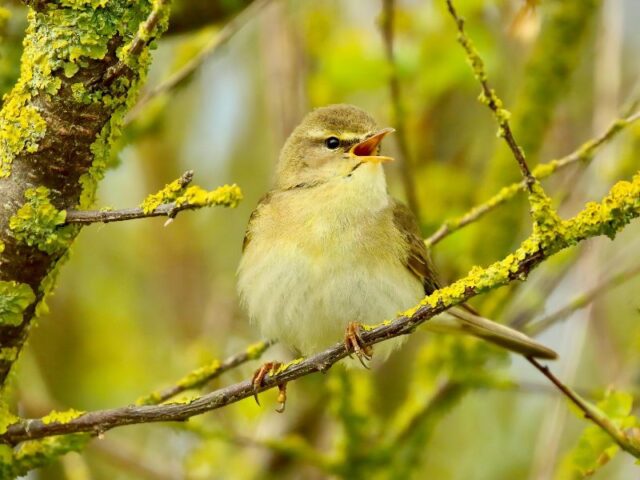Researchers from the British Trust for Ornithology (BTO) have used data gathered by volunteers to uncover how the decline in one
Red-listed species is linked to climate-induced changes
in its breeding behaviour.
The open-access findings of their study have now been
published in the journal Biology Letters.
Willow Warblers are small, tuneful birds that breed across Europe and spend the winter south of the Sahara Desert. Numbers in England declined by 45% between 1995 and 2018, but the Scottish population saw an increase of 25% in the same period. Previous BTO research has shown that climate change means southern Britain is now warmer than the optimum breeding temperature for Willow Warblers, while this temperature is now being reached in Scotland.
However, a new examination of data collected by volunteers between 2000 and 2018 has shed more light on how exactly Willow Warblers are responding to rising temperatures. Female Willow Warblers, like those of many species, lose their breast feathers to form a ‘brood patch’ after they have laid their eggs. This allows them to keep their eggs warm more efficiently. During the period in question, volunteer bird ringers recorded female Willow Warblers in England re-growing these feathers more quickly than those in Scotland. Subsequently, English Willow Warblers commenced the replacement of their flight feathers earlier than their northern counterparts. This implies that English birds were less likely to have successfully raised young.
Other data, collected by volunteers taking part in the BTO Nest Record Scheme, show that Willow Warblers lay their eggs earlier in years when springtime temperatures are higher – wherever in the UK they might be. This, the researchers say, reveals how climate change can impact different events in a species’ annual cycle at different speeds. The resulting mismatch in the timing of key events in the breeding season has negative implications for the species’ breeding success and compounds the other pressures already facing migrant songbirds like Willow Warblers, including habitat loss and declines in insect prey. Understanding which events are most vulnerable to climate change can help us target conservation measures more effectively, they argue.
BTO Ecological Statistician Dr Philipp Boersch-Supan says: ‘Quantifying the timing of multiple life-cycle events allowed us to identify the brood stage as a pinch point in the Willow Warbler’s breeding season. Conservation measures and future research can now target this stage specifically, and the same methodology can be used to identify vulnerabilities in the annual cycle of other species.’
BTO Research Ecologist Dr Hugh Hanmer says: ‘Previously unanalysed biometric data collected by volunteer bird ringers, combined with data collected by volunteer nest recorders, has allowed us to gain these insights into how and why Willow Warbler populations are changing in different regions.’




